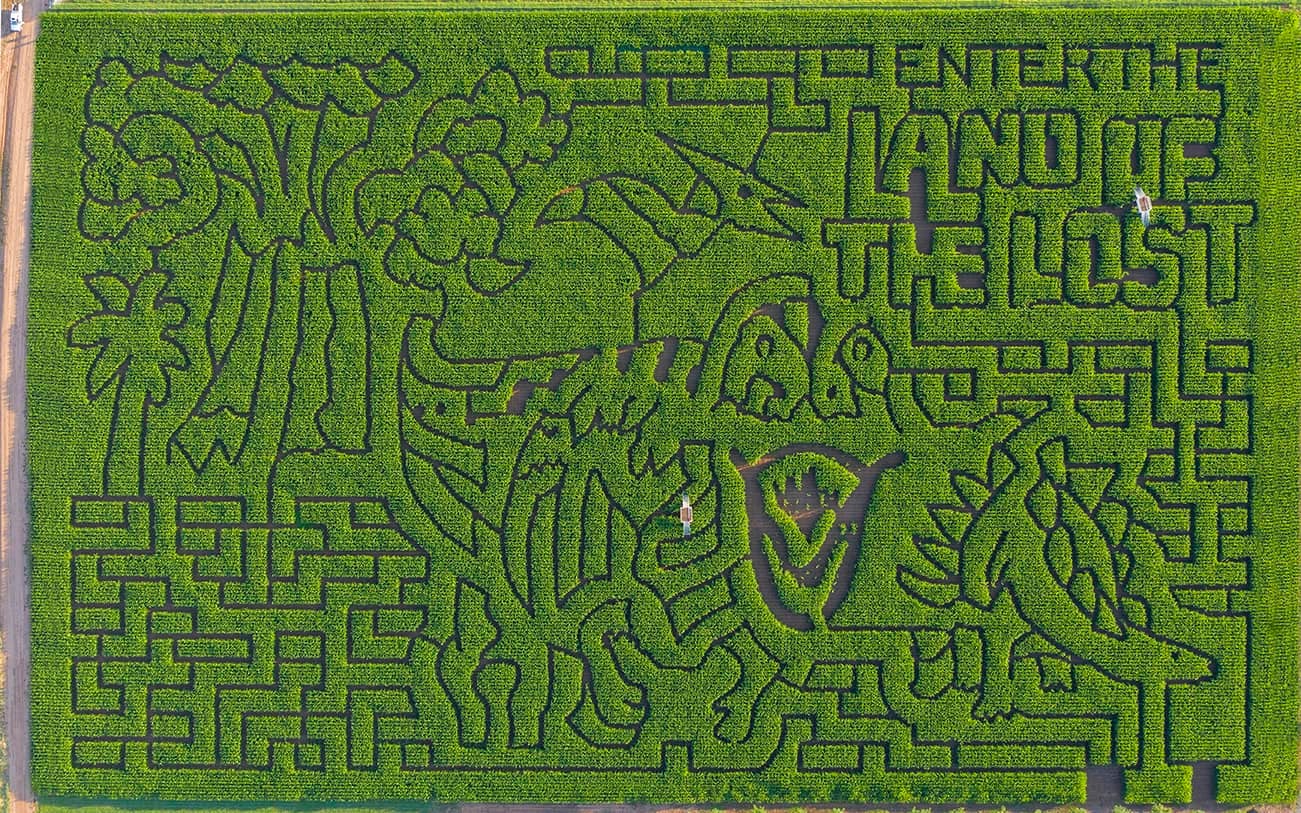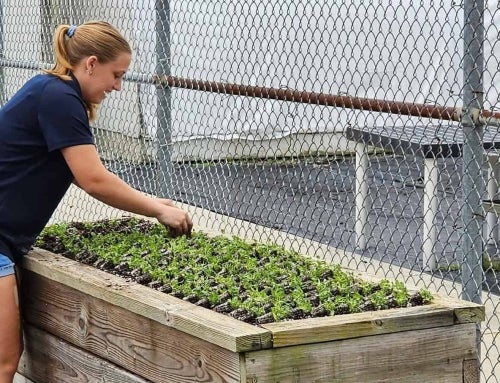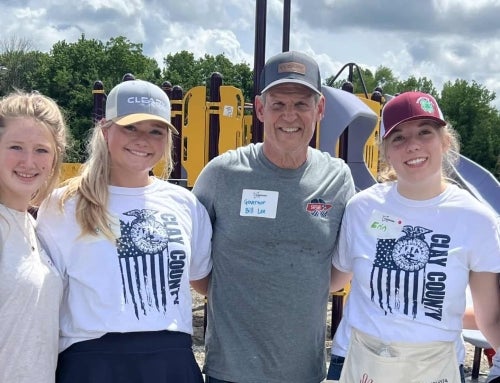The McCall family had been growing pumpkins on their Moriarty, N.M., farm for several years when they decided to invite the local kindergarten class to visit their pumpkin patch.
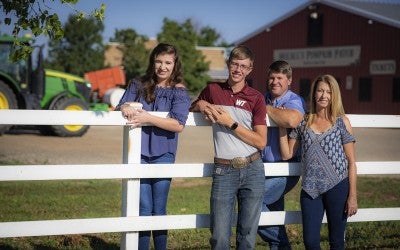 “The school groups came to the farm on a school bus, went out into the field and picked pumpkins for $4 each,” says FFA member and farmer Caleb McCall. “My dad had an aha moment that this could work for the farm.”
“The school groups came to the farm on a school bus, went out into the field and picked pumpkins for $4 each,” says FFA member and farmer Caleb McCall. “My dad had an aha moment that this could work for the farm.”
After those first school visits in 1998, trips to McCall’s Pumpkin Patch became an annual tradition. The farm transitioned from selling truckloads of pumpkins wholesale to welcoming school groups and opening the farm gates to the public. On those first fall weekends, the farm welcomed an average of 2,000 visitors, and some families drove from as far away as Albuquerque and Santa Fe to experience life on the farm.
“It just grew from there,” McCall says. “We started out with one class of kindergartners in 1998, and last season, we had over 100,000 people.”
Sharing the Story of Agriculture
The pumpkin patch was only the beginning.
The McCall family began adding new attractions each season and developed an agritourism business — farms that contain a recreational or educational enterprise component, such as tours of a working farm and pick-your-own fruits, as described by the U.S. Department of Agriculture (USDA). Agritourism isn’t a new trend, but it’s one that continues to grow. “Farm agritourism revenue more than tripled between 2002 and 2017, according to data from the Census of Agriculture,” the USDA reports. “Adjusted for inflation, agritourism revenue grew from $704 million in 2012 to almost $950 million in 2017.”
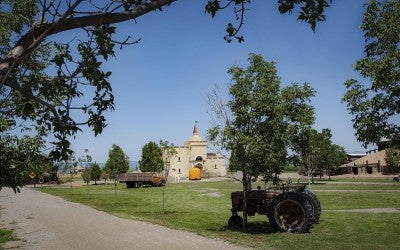 The McCall operation started with a pumpkin patch and petting zoo. It now offers more than 50 attractions, including hayrides, pumpkin cannons, a produce stand, a low ropes course, a cow-theme train ride, pig races and multiple food outlets.
The McCall operation started with a pumpkin patch and petting zoo. It now offers more than 50 attractions, including hayrides, pumpkin cannons, a produce stand, a low ropes course, a cow-theme train ride, pig races and multiple food outlets.
One of the newest attractions is a 3,000-square-foot castle complete with princess makeovers, tea parties and costumed princesses reading stories. McCall calls the castle his favorite attraction on the farm. “It’s the epicenter of our Main Street,” he says.
In addition to looking to world-class attractions such as Walt Disney World and Dollywood for inspiration, the family has connected with agritourism operators across the country to help generate ideas and trade tips for running a successful pumpkin patch and corn maze. Creating an entertaining environment is just part of their mission.
“We’re a miniature-scale amusement park with an agriculture focus,” McCall says. “I’ve been very active about advocating for agriculture. I love teaching people about where their food comes from because with that knowledge and their support for agriculture, the industry thrives.”
The FFA Connection
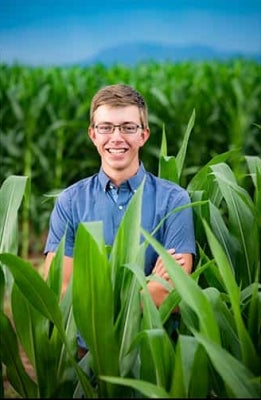 McCall is always learning.
McCall is always learning.
As a member (and past president) of Moriarty FFA, he learned a lot about farming in agriscience classes and activities, such as the agronomy career development event (CDE). The farm is also the basis for his current supervised agricultural experience (SAE) in diversified agriculture. He hopes it will help him earn his American Degree in 2020. McCall also credits FFA leadership skills that have been essential on the farm.
Attending the New Century Farmer conference in 2019 allowed him to connect with other young producers to share knowledge, ideas and challenges that will propel their future success. He calls it a highlight of his FFA career, and he believes that staying in contact with attendees and sharing experiences will influence his path in agriculture.
“If I didn’t do FFA, I don’t think I’d be able to talk about the farm as fluently,” he says.
McCall is currently a freshman studying plant, soil and environmental science at West Texas A&M University, and he’s developing even more of a foundation for a career in agriculture.
“My dad was taught by his grandpa how to farm, and a lot of the practices we used are passed down. No one on the farm has ever had the understanding of how it all works,” he explains.
My plan is to get that understanding and come back and be able to fix a lot of those practices and bring more of an educational process to the farm.”
Lost in the Possibilities
The 14-acre corn maze is one of the highlights of McCall’s Pumpkin Patch. It takes months to pick a theme and settle on a design. Past themes have included a tribute to New Mexico, Pac-Man, Looney Tunes, and a castle and dragon. The 2020 maze features dinosaurs as a nod to the Land of the Lost TV series. The farm has also worked with sponsors, including McDonald’s and the University of New Mexico, to use the corn maze as a canvas for logos and branded messages.
In 2013, after the now-iconic Super Bowl commercial, the McCall family chose “God Made a Farmer” as its corn maze theme. The maze design featured a tractor and an American flag. McCall says it was one of his favorites. Once the design is complete, McCall flies a drone over the corn maze and snaps photos so visitors can see how it looks from above.
The family works with The MAiZE Inc., the world’s largest cornfield maze design company, to design and cut all of its corn mazes. The McCalls also travel to destinations such as Arizona, Hawaii, Florida and California to attend annual conferences to stay up-to-date on trends.
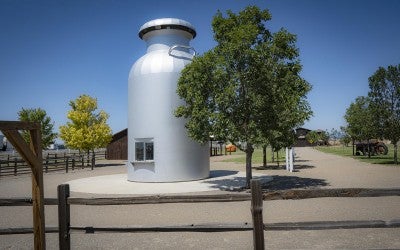 The maze is not the only thing that changes every year. The McCall family is constantly adding new attractions to its agrtourism operation. A 32-foot-tall milk can — the second tallest in the world — that operates as a soft-serve ice cream stand is one of the standout attractions. Major improvements to the haunted attractions are under construction and scheduled to make their debut this fall.
The maze is not the only thing that changes every year. The McCall family is constantly adding new attractions to its agrtourism operation. A 32-foot-tall milk can — the second tallest in the world — that operates as a soft-serve ice cream stand is one of the standout attractions. Major improvements to the haunted attractions are under construction and scheduled to make their debut this fall.
Although McCall’s Pumpkin Patch already has a strong educational focus, McCall hopes to expand on that element of the operation by adding an educational barn that highlights different areas of agriculture, such as dairy, poultry and crop production to further educate visitors about where their food comes from.
“We want to take people away from the city, away from technology, away from the stress,” he says. “We want them to have fun and experience what life is like on the farm.”
THE MAKING OF A MAZE
Creating a corn maze is a big undertaking. Some farmers take a DIY approach, sketching out designs on graph paper and using GPS-enabled tractors to carve paths, while others hire companies to turn their ideas into maze designs. In both cases, the process is similar. Corn is planted in a grid. When it grows knee-high, flags are set out to mark the outline. The design is spray-painted and then cut to create the paths.
In 2013, FFA sponsor Culver’s started the Thank You Farmers project to support agricultural education programs. The restaurant group has partnered with farmers to create agricultural-themed mazes for the past five seasons, and the designs have ranged from a honeybee and hive to a horse pulling a plow. To date, Culver’s has grown 38 Thank You Farmers project corn mazes in 19 states. In 2018, a farm in Olivet, Mich., designed a cornmaze with the FFA logo.

